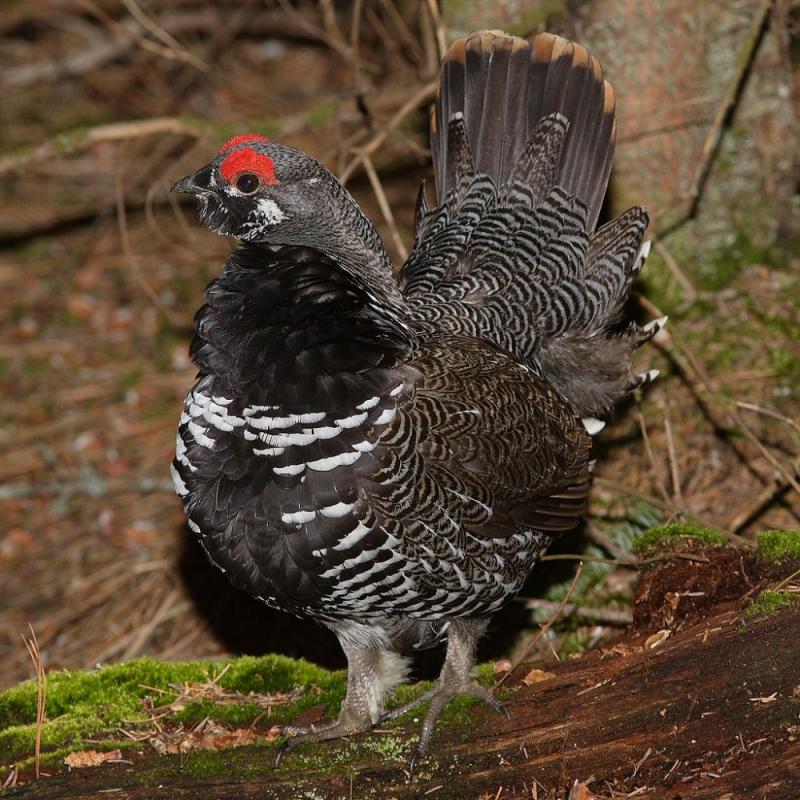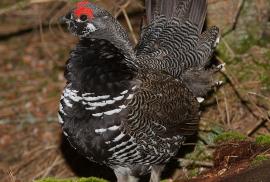Guide to Boreal Birds
Overview
This northern grouse is extraordinarily tame and can occasionally be approached and caught; hence its local name, "Fool Hen." It is generally a quiet bird, thinly distributed in its habitat and therefore difficult to find. Its principal foods are the needles and buds of evergreens, although young birds consume large quantities of insects. Spruce Grouse are generally found singly or in small family groups, quietly picking their way over the forest floor or sitting in dense conifers.
As its name suggests, this essentially non-migratory year-round resident species occurs almost exclusively in coniferous forests, though not necessarily in spruces. A relatively small proportion of the population makes short-distance migratory movements of up to 11 km between breeding and wintering areas. In much of its boreal range, Spruce Grouse are most closely associated with fire-adapted jack pine and lodgepole pine habitats but in some regions also with habitats dominated by spruce, fir, and other coniferous tree species. Pine and spruce needles are the major food for this species throughout most of the year. Loss of its habitat along southern edge of range has reduced abundance in those areas. Forestry practices that mimic fires by making small clearcuts and leaving patches of optimal habitat interspersed may be able to maintain healthy populations.
Description
15-17" (38-43 cm). A dark, chicken-like bird with a fan-shaped tail. Male dusky gray-brown, with red comb over eye, black throat and upper breast, white-spotted sides, chestnut-tipped tail. Birds in northern Rockies and Cascades (known as "Franklin's Grouse") have white tips on upper tail coverts and lack chestnut tail tip. Females of both forms browner; underparts barred with brown.
Voice
Males give a low krrrrk, krrrk, krrk, krrk, krrk, said to be the lowest-pitched vocal sound of any North American bird. Females produce low clucking notes.
Nesting
8-11 buff eggs, plain or spotted with brown, in a hollow lined with grass and leaves concealed on the ground under low branches of a young spruce.
Habitat
Coniferous forests, especially those with a mixture of spruce and pine, edges of deep forests and bogs.
Range/Migration
Resident from Alaska, northern Manitoba, Quebec, and Nova Scotia south to Washington, Wyoming, central Manitoba, Michigan, and northern New England.



